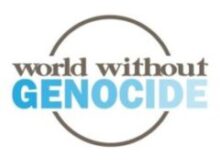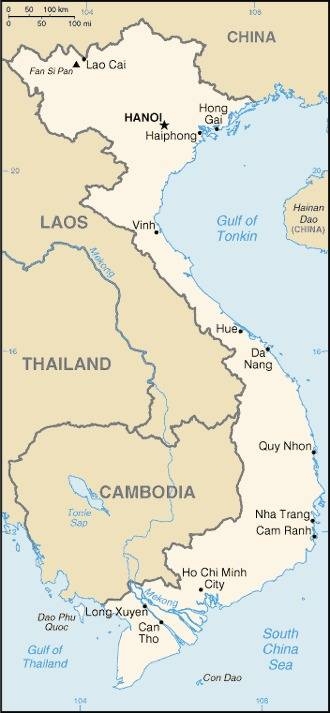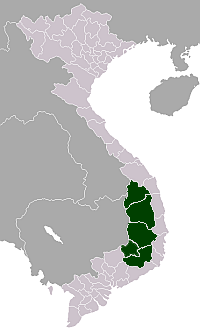Vietnam’s Persecution of Ethnic Montagnard Minorities
Where
Vietnam, formally the Socialist Republic of Vietnam, is a Southeast Asian country located on the eastern edge of mainland Southeast Asia. The country shares land borders with China, Laos, and Cambodia. Over 85% of the population is of the dominant Vietnamese or “Kinh” ethnic group.
However, Vietnam is also home to 53 other ethnic minority groups, many of whom are indigenous to the country’s Central Highlands region. These include ethnic groups like the Jarai, Ede (Rhade), Bahnar, and Koho. These central highlanders, often referred collectively to as “Montagnards” (“mountain people”) or “Dega,” speak a variety of Mon-Khmer and Malayo-Polynesian languages.[1]
The Central Highlands occupies a crucial strategic location in terms of Vietnam’s economy, politics, and security. It borders Laos to the northwest and Cambodia to the west. The region contains nearly 5 million acres of fertile basalt soil, which is ideal for cash crops such as coffee, cocoa, rubber, and mulberry. The area also holds enormous bauxite reserves, totaling billions of tons. Bauxite is the main raw material used in the production of aluminum. [2]
Coffee production is the lifeblood of the Central Highlands’ economy. Vietnam is the world’s second-largest coffee producer after Brazil and the largest exporter of Robusta coffee (a lower grade of coffee used primarily for instant coffees).[3] The Central Highlands alone accounts for 95% of the country’s total coffee production.[4]
When
Conflict and animosity between the ethnic Vietnamese majority and the Montagnards have a long history. During the Vietnam War (1954–1975), the Central Highlands saw intense combat between the U.S. military, South Vietnamese forces, and North Vietnam-backed communist guerrillas. Throughout the conflict, the Montagnards’ political allegiance was divided. Many participated in the fighting on either the Communists’ or the US and allies’ side, while others pushed for independence from all forms of Vietnamese rule. In 1964, pro-independent highlanders formed an armed resistance movement, FULRO, that fought against both North and South Vietnam.[5]
After 1975, FULRO continued its armed resistance against the unified Socialist Republic of Vietnam until 1992. To consolidate government control over this vital area, ethnic Vietnamese majority people and non-Montagnard minorities were actively encouraged to migrate to the Central Highlands in the 1980s. The prospect of obtaining cheap lands and finances to grow coffee was another factor in the migration. As a result, the area saw an influx of up to three million non-Montagnards on their ancestral lands and exacerbated the already-existing inequality and marginalization experienced by Dega communities. Ethnic minorities make up around 15% of the Vietnamese population but account for over 70% of the country’s extremely poor.[6]
The Montagnards have also been persecuted due to their faith. Originally followers of animistic beliefs, they began to convert to Christianity in the 1950s and 1960s. Today Montagnard Christians account for nearly half of Vietnam’s Protestants (1.1 % of the population). The majority of Christians in the Central Highlands choose to worship in independently-run village or house churches rather than affiliating with the government-approved Southern Evangelical Church of Vietnam. These independent house churches have been targeted by Vietnamese authorities, who accused them of being a front for Montagnards’ separatism.[7]
How
Tensions in the Central Highlands flared up in the early 2000s, precipitated by religious persecution, land disputes, and the collapse of coffee export prices. After being off the market for years due to bad weather, war, and economic isolation, Vietnam rejoined the coffee market in the mid-1990s and quickly emerged as the second largest exporter after Brazil.[8] As a result, the Central Highlands’ economy became increasingly susceptible to fluctuations in coffee prices. When global coffee prices plummeted in the late 1990s and early 2000s, the ensuing economic crisis exacerbated existing social and political tensions in the region.
In February 2001, mass protests erupted across the region. Thousands of Montagnards marched to provincial cities demanding land restitution, religious freedom, and an end to eviction due to indebtedness. More protests took place in 2002, 2004, and 2008.[9]
The Vietnamese government responded with brutal crackdowns, using troops and riot police to close off the region and round up the protestors. Dega activists were subjected to long prison sentences, torture, beatings, or murder. The government and the Communist Party launched a vigorous propaganda effort against Dega Protestantism, branding it as an “evil way” and a cover for the resurgence of FULRO. Authorities shut down several house churches and harassed or imprisoned defiant pastors. Those who took part in the protests were forced to participate in “public criticism sessions,” where they had to admit their wrongdoing, renounce their faith, and pledge allegiance to the state and the Party.[10]
Fearing arrest and retaliation, thousands fled into hiding or crossed the border to Cambodia.[11] Some were taken in as refugees, but many were sent back to Vietnam under pressure from Hanoi.[12] Vietnamese local authorities have also refused to issue identity cards and household registration documents to hundreds of Montagnards, effectively rendering them stateless.[13]
Response
Very little has been done in response to the ongoing marginalization and repression of ethnic Montagnards in Vietnam’s Central Highlands. Vietnam is now viewed as an important trade partner and possible ally of the United States in Southeast Asia, particularly in the context of the growing rivalry between the US and China. Thus, human rights issues have largely taken a back seat to economic and security interests in U.S.-Vietnam relations.
Despite recommendations from the U.S. Commission on International Religious Freedom, the State Department has not designated Vietnam a “Country of Particular Concern” since 2006 for a lack of religious freedom.[14] A bipartisan bill, the Vietnam Human Rights Act, was introduced in 2021 but has made very little headway in Congress. This bill allows the U.S. government to impose sanctions on Vietnamese officials for systemic abuses of human rights, including egregious violations of religious freedom.
References
Image Sources
Vietnam – CIA World Factbook: https://www.cia.gov/the-world-factbook/countries/vietnam/map
Central Highlands – Wikimedia Commons: https://commons.wikimedia.org/wiki/File:VietnamCentralHighlandsmap.png
Content Sources
[1] https://www.cia.gov/the-world-factbook/countries/vietnam/summaries
[2] https://www.hrw.org/reports/2002/vietnam/viet0402-03.htm#P369_47626
[3] https://www.bbc.com/news/magazine-25811724
[4] https://www.vietnam-briefing.com/news/vietnams-central-highlands-region.html/
[5] https://www.hrw.org/reports/2002/vietnam/viet0402-03.htm#P439_66048
[6] https://southeastasiaglobe.com/ethnic-minority-youth-vietnam-economy/
[7] https://www.hrw.org/reports/2002/vietnam/viet0402-08.htm#P796_148122
[8] https://www.ico.org/documents/ed1849.pdf
[9] https://www.hrw.org/report/2011/03/30/montagnard-christians-vietnam/case-study-religious-repression
[10] Ibid.
[11] https://www.rfa.org/english/news/133088-20040412.html
[12] https://www.voanews.com/a/east-asia-pacific_montagnards-deportation-sparks-fears-about-safety/6170856.html
https://www.kaldorcentre.unsw.edu.au/focus-montagnard-asylum-seekers-cambodia-cambodian-and-international-reactions
[13] https://www.uscirf.gov/sites/default/files/2022-04/2022%20Vietnam.pdf
[14] https://www.uscirf.gov/sites/default/files/2022-04/2022%20Vietnam.pdf




